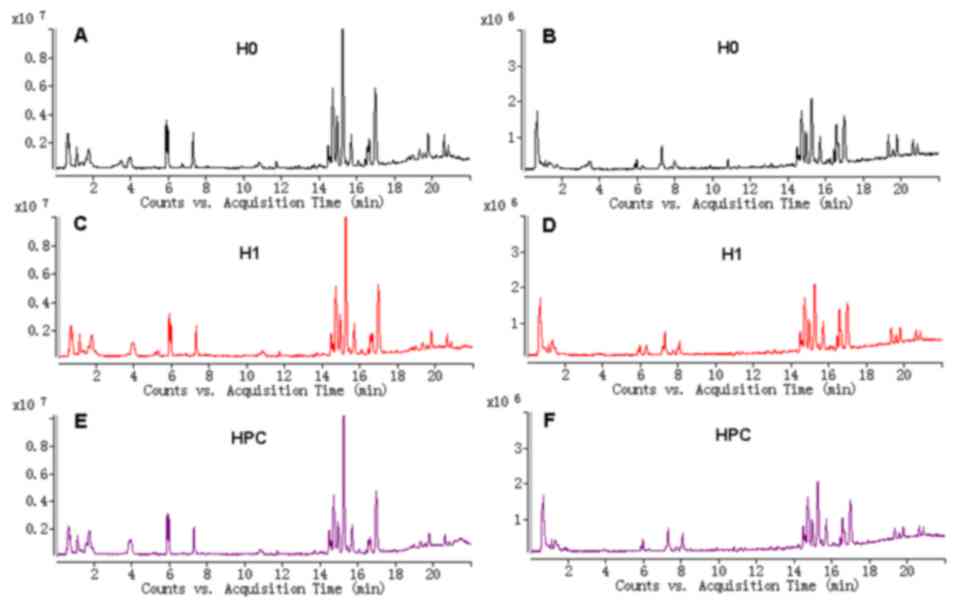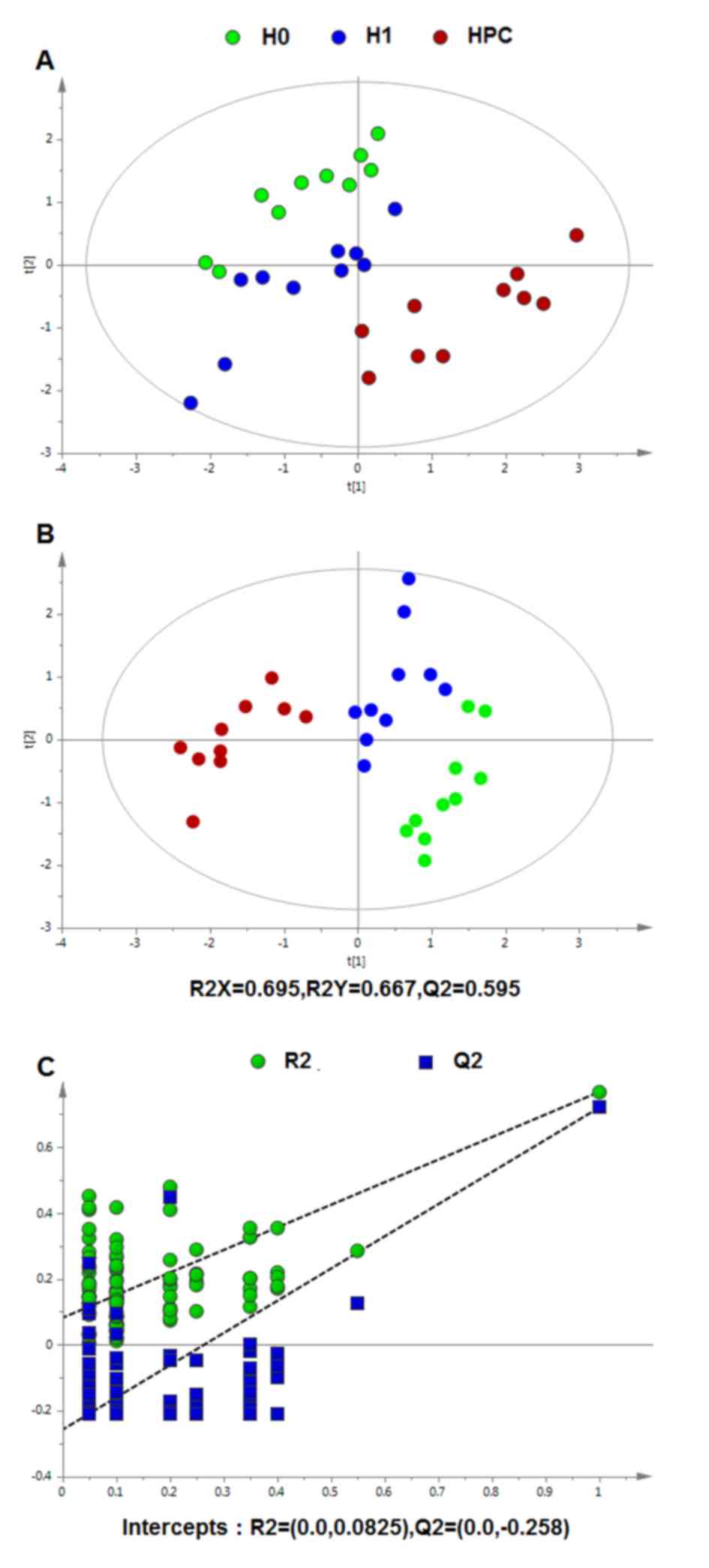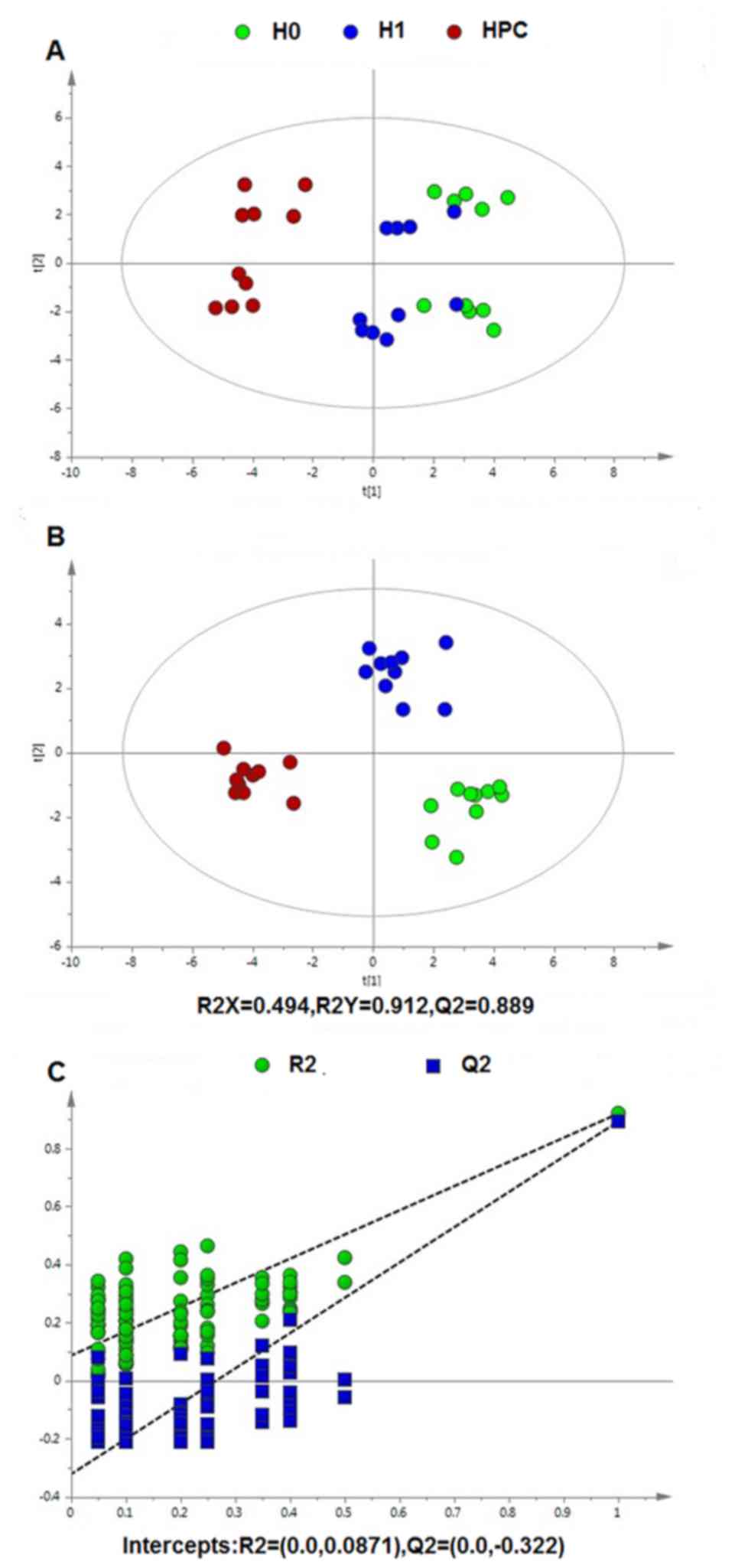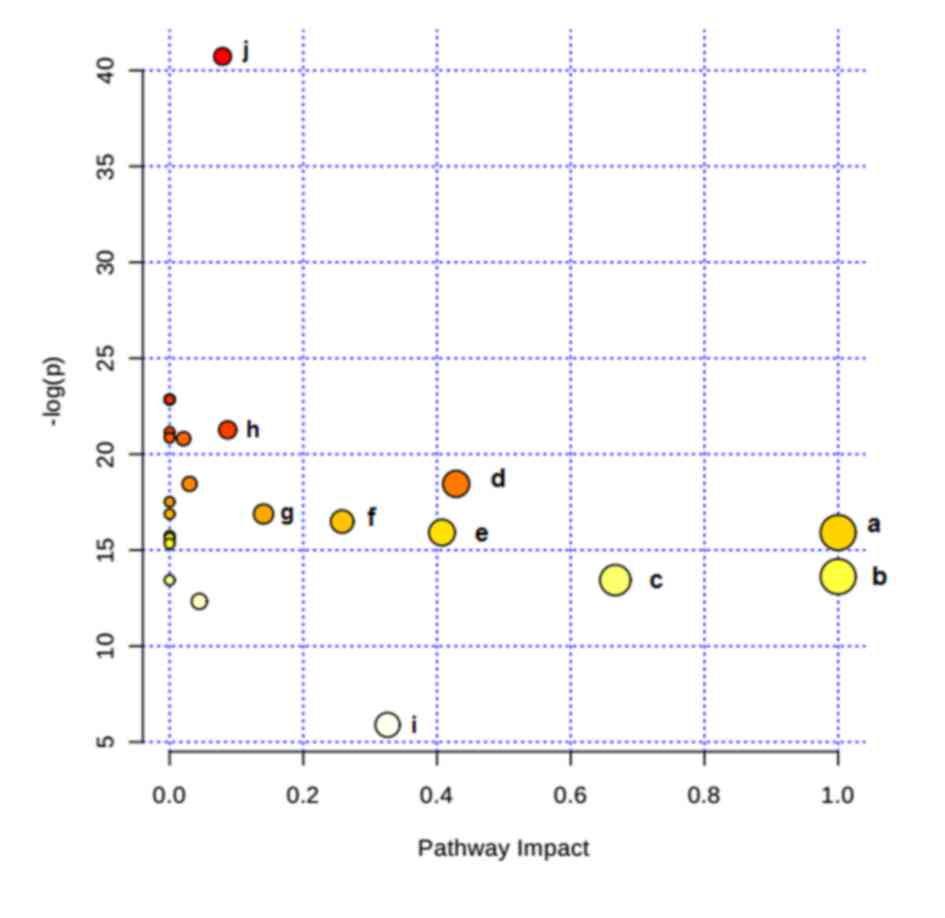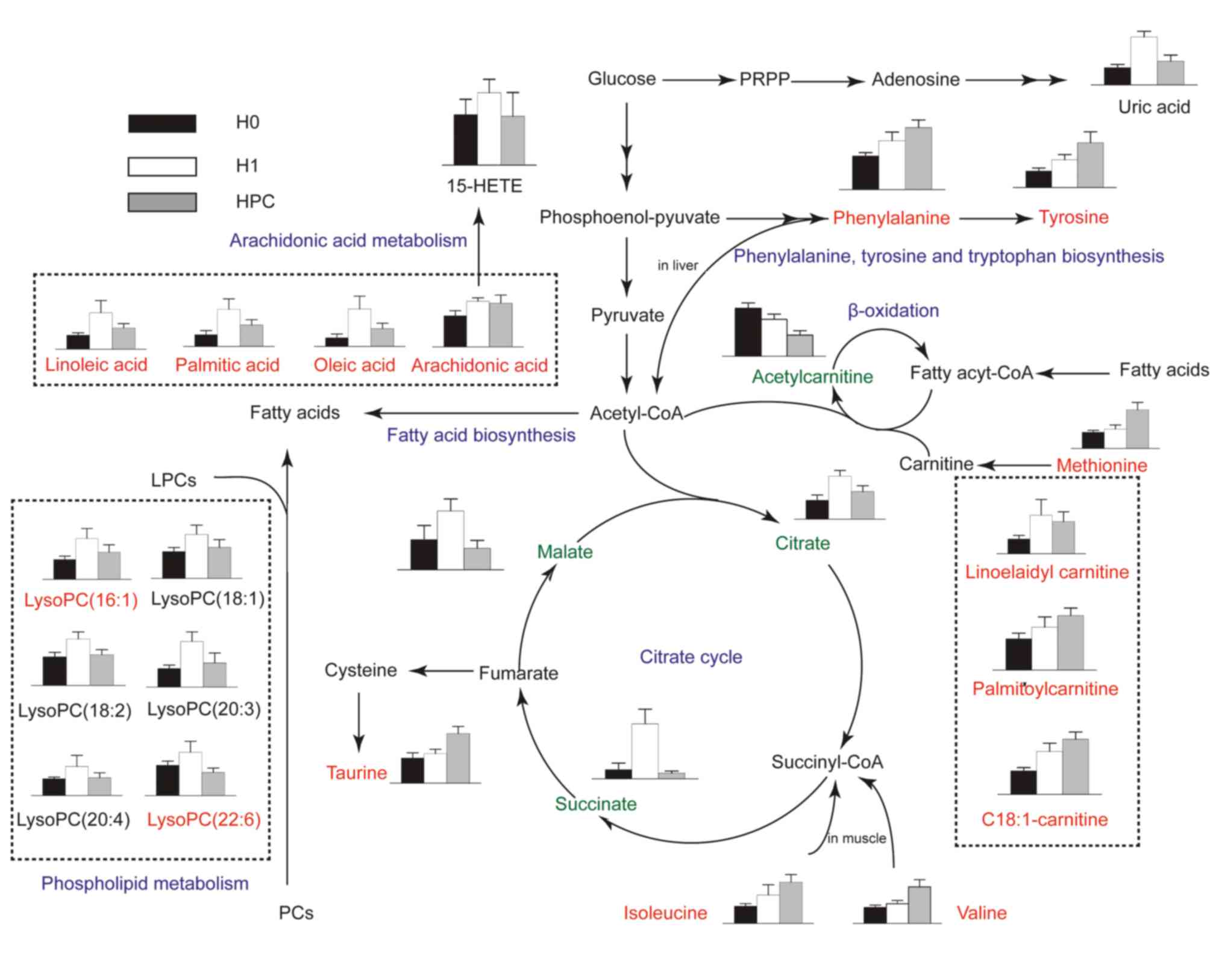|
1
|
Janoff A: Alterations in lysosomes
(intracellular enzymes) during shock; effects of preconditioning
(tolerance) and protective drugs. Int Anesthesiol Clin. 2:251–269.
1964. View Article : Google Scholar : PubMed/NCBI
|
|
2
|
Dirnagl U, Becker K and Meisel A:
Preconditioning and tolerance against cerebral ischaemia: From
experimental strategies to clinical use. Lancet Neurol. 8:398–412.
2009. View Article : Google Scholar : PubMed/NCBI
|
|
3
|
Zhang SX, Miller JJ, Gozal D and Wang Y:
Whole-body hypoxic preconditioning protects mice against acute
hypoxia by improving lung function. J Appl Physiol (1985).
96:392–397. 2004. View Article : Google Scholar : PubMed/NCBI
|
|
4
|
Carini R, De Cesaris MG, Splendore R,
Bagnati M and Albano E: Ischemic preconditioning reduces Na(+)
accumulation and cell killing in isolated rat hepatocytes exposed
to hypoxia. Hepatology. 31:166–172. 2000. View Article : Google Scholar : PubMed/NCBI
|
|
5
|
Zhu HL, Wei X, Qu SL, Zhang C, Zuo XX,
Feng YS, Luo Q, Chen GW, Liu MD, Jiang L, et al: Ischemic
postconditioning protects cardiomyocytes against
ischemia/reperfusion injury by inducing MIP2. Exp Mol Med.
43:437–445. 2011. View Article : Google Scholar : PubMed/NCBI
|
|
6
|
Gao Y, Gao G, Long C, Han S, Zu P, Fang L
and Li J: Enhanced phosphorylation of cyclic AMP response element
binding protein in the brain of mice following repetitive hypoxic
exposure. Biochem Biophys Res Commun. 340:661–667. 2006. View Article : Google Scholar : PubMed/NCBI
|
|
7
|
Wang MM, Wang LJ, Chen Y, Li XR, Lv GW and
Xue M: Establishment of the prediction model of tolerance time of
mice and rats exposed to hypoxia. Chin J Comp Med. 1–23. 2008.
View Article : Google Scholar
|
|
8
|
Lu GW, Yu S, Li RH, Cui XY and Gao CY:
Hypoxic preconditioning: A novel intrinsic cytoprotective strategy.
Mol Neurobiol. 31:255–271. 2005. View Article : Google Scholar : PubMed/NCBI
|
|
9
|
Lv H, Wang Q, Wu S, Yang L, Ren P, Yang Y,
Gao J and Li L: Neonatal hypoxic ischemic encephalopathy-related
biomarkers in serum and cerebrospinal fluid. Clin Chim Acta.
450:282–297. 2015. View Article : Google Scholar : PubMed/NCBI
|
|
10
|
Hernández-Jiménez M, Sacristán S, Morales
C, García-Villanueva M, García-Fernández E, Alcázar A, González VM
and Martín ME: Apoptosis-related proteins are potential markers of
neonatal hypoxic-ischemic encephalopathy (HIE) injury. Neurosci
Lett. 558:143–148. 2014. View Article : Google Scholar : PubMed/NCBI
|
|
11
|
Cui C, Zhou T, Li J, Wang H, Li X, Xiong
J, Xu P and Xue M: Proteomic analysis of the mouse brain after
repetitive exposure to hypoxia. Chem Biol Interact. 236:57–66.
2015. View Article : Google Scholar : PubMed/NCBI
|
|
12
|
Fiehn O: Metabolomics-the link between
genotypes and phenotypes. Plant Mol Biol. 48:155–171. 2002.
View Article : Google Scholar : PubMed/NCBI
|
|
13
|
Sreekumar A, Poisson LM, Rajendiran TM,
Khan AP, Cao Q, Yu J, Laxman B, Mehra R, Lonigro RJ, Li Y, et al:
Metabolomic profiles delineate potential role for sarcosine in
prostate cancer progression. Nature. 457:910–914. 2009. View Article : Google Scholar : PubMed/NCBI
|
|
14
|
Jové M, Portero-Otín M, Naudí A, Ferrer I
and Pamplona R: Metabolomics of human brain aging and age-related
neurodegenerative diseases. J Neuropathol Exp Neurol. 73:640–657.
2014. View Article : Google Scholar : PubMed/NCBI
|
|
15
|
Shah SH, Kraus WE and Newgard CB:
Metabolomic profiling for the identification of novel biomarkers
and mechanisms related to common cardiovascular diseases: Form and
function. Circulation. 126:1110–1120. 2012. View Article : Google Scholar : PubMed/NCBI
|
|
16
|
Armitage EG and Barbas C: Metabolomics in
cancer biomarker discovery: Current trends and future perspectives.
J Pharm Biomed Anal. 87:1–11. 2014. View Article : Google Scholar : PubMed/NCBI
|
|
17
|
Zhou T, Wang M, Cheng H, Cui C, Su S, Xu P
and Xue M: UPLC-HRMS based metabolomics reveals the sphingolipids
with long fatty chains and olefinic bonds up-regulated in metabolic
pathway for hypoxia preconditioning. Chem Biol Interact.
242:145–152. 2015. View Article : Google Scholar : PubMed/NCBI
|
|
18
|
Lu GW, Chui XY and Zhao LF: Brain
mechanisms of hypoxic preconditioning. Zhongguo Ying Yong Sheng Li
Xue Za Zhi. 20:98–103. 2004.(In Chinese). PubMed/NCBI
|
|
19
|
Liao WT, Liu B, Chen J, Cui JH, Gao YX,
Liu FY, Xu G, Sun BD, Yuan ZB, Zhang EL, et al: Metabolite
Modulation in Human Plasma in the Early Phase of Acclimatization to
Hypobaric Hypoxia. Sci Rep. 6:225892016. View Article : Google Scholar : PubMed/NCBI
|
|
20
|
Yin P, Wan D, Zhao C, Chen J, Zhao X, Wang
W, Lu X, Yang S, Gu J and Xu G: A metabonomic study of hepatitis
B-induced liver cirrhosis and hepatocellular carcinoma by using
RP-LC and HILIC coupled with mass spectrometry. Mol BioSyst.
5:868–876. 2009. View
Article : Google Scholar : PubMed/NCBI
|
|
21
|
Tan G, Liao W, Dong X, Yang G, Zhu Z, Li
W, Chai Y and Lou Z: Metabonomic profiles delineate the effect of
traditional Chinese medicine sini decoction on myocardial
infarction in rats. PLoS One. 7:e341572012. View Article : Google Scholar : PubMed/NCBI
|
|
22
|
Xia J, Mandal R, Sinelnikov IV, Broadhurst
D and Wishart DS: MetaboAnalyst 2.0-a comprehensive server for
metabolomic data analysis. Nucleic Acids Res. 40:W127–W133. 2012.
View Article : Google Scholar : PubMed/NCBI
|
|
23
|
Xia J and Wishart DS: Web-based inference
of biological patterns, functions and pathways from metabolomic
data using MetaboAnalyst. Nat Protoc. 6:743–760. 2011. View Article : Google Scholar : PubMed/NCBI
|
|
24
|
Muratsubaki H and Yamaki A: Profile of
plasma amino Acid levels in rats exposed to acute hypoxic hypoxia.
Indian J Clin Biochem. 26:416–419. 2011. View Article : Google Scholar : PubMed/NCBI
|
|
25
|
Walker V, Gentry AJ, Green LR, Hanson MA
and Bennet L: Effects of hypoxia on plasma amino acids of fetal
sheep. Amino Acids. 18:147–156. 2000. View Article : Google Scholar : PubMed/NCBI
|
|
26
|
Tang DQ, Bian TT, Zheng XX, Li Y, Wu XW,
Li YJ, Du Q and Jiang SS: LC-MS/MS methods for the determination of
edaravone and/or taurine in rat plasma and its application to a
pharmacokinetic study. Biomed Chromatogr. 28:1173–1182. 2014.
View Article : Google Scholar : PubMed/NCBI
|
|
27
|
Sahin MA, Yucel O, Guler A, Doganci S,
Jahollari A, Cingoz F, Arslan S, Gamsizkan M, Yaman H and
Demirkilic U: Is there any cardioprotective role of Taurine during
cold ischemic period following global myocardial ischemia? J
Cardiothorac Surg. 6:312011. View Article : Google Scholar : PubMed/NCBI
|
|
28
|
Jones LL, McDonald DA and Borum PR:
Acylcarnitines: Role in brain. Prog Lipid Res. 49:61–75. 2010.
View Article : Google Scholar : PubMed/NCBI
|
|
29
|
Bruder ED and Raff H: Cardiac and plasma
lipid profiles in response to acute hypoxia in neonatal and young
adult rats. Lipids Health Dis. 9:32010. View Article : Google Scholar : PubMed/NCBI
|
|
30
|
Hota KB, Hota SK, Chaurasia OP and Singh
SB: Acetyl-L-carnitine-mediated neuroprotection during hypoxia is
attributed to ERK1/2-Nrf2-regulated mitochondrial biosynthesis.
Hippocampus. 22:723–736. 2012. View Article : Google Scholar : PubMed/NCBI
|
|
31
|
Barhwal K, Singh SB, Hota SK, Jayalakshmi
K and Ilavazhagan G: Acetyl-L-carnitine ameliorates hypobaric
hypoxic impairment and spatial memory deficits in rats. Eur J
Pharmacol. 570:97–107. 2007. View Article : Google Scholar : PubMed/NCBI
|
|
32
|
Liu H, Zhao H, Wang W, Xie X and Lu GW:
Changes of PLA2 Activity in Hypoxic Preconditioning in Brain
Tissue. Aca Periodical Changchun Coll Traditional Chinese Med.
16:49–50. 2006.
|
|
33
|
Duong CQ, Bared SM, Abu-Khader A, Buechler
C, Schmitz A and Schmitz G: Expression of the lysophospholipid
receptor family and investigation of lysophospholipid-mediated
responses in human macrophages. Biochim Biophys Acta. 1682:112–119.
2004. View Article : Google Scholar : PubMed/NCBI
|
|
34
|
Kabarowski JH: G2A and LPC: Regulatory
functions in immunity. Prostaglandins Other Lipid Mediat. 89:73–81.
2009. View Article : Google Scholar : PubMed/NCBI
|
|
35
|
Oestvang J and Johansen B:
PhospholipaseA2: A key regulator of inflammatory signalling and a
connector to fibrosis development in atherosclerosis. Biochim
Biophys Acta. 1761:1309–1316. 2006. View Article : Google Scholar : PubMed/NCBI
|
|
36
|
Balsinde J, Winstead MV and Dennis EA:
Phospholipase A(2) regulation of arachidonic acid mobilization.
FEBS Lett. 531:2–6. 2002. View Article : Google Scholar : PubMed/NCBI
|
|
37
|
Hare JM and Johnson RJ: Uric acid predicts
clinical outcomes in heart failure: Insights regarding the role of
xanthine oxidase and uric acid in disease pathophysiology.
Circulation. 107:1951–1953. 2003. View Article : Google Scholar : PubMed/NCBI
|



